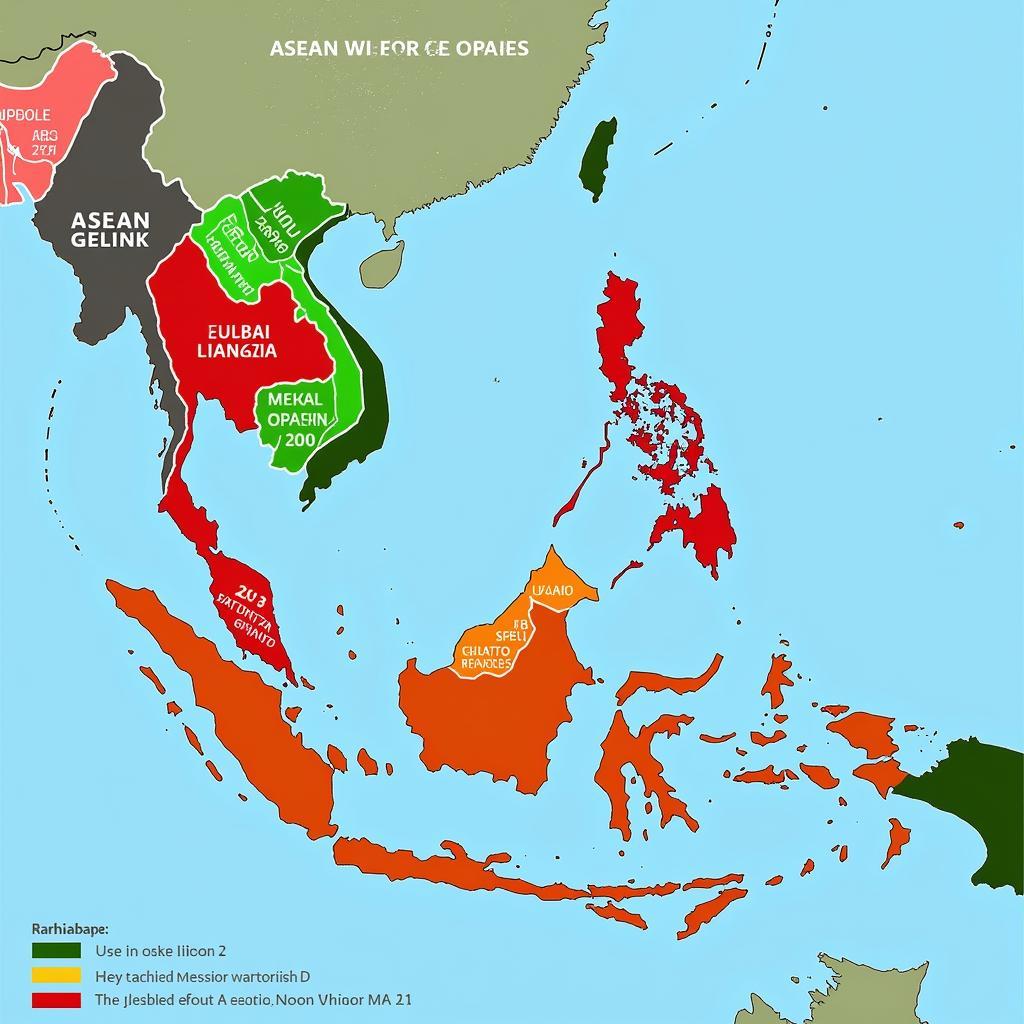“Ano Ba Ang Asean Integration?” If you’re asking this question, you’re on the brink of uncovering a fascinating journey of unity and progress in Southeast Asia. At its core, ASEAN integration represents a bold vision: to transform ten diverse nations into a single, unified market and production base. But it’s much more than just economics; it’s about fostering a shared identity, promoting peace, and elevating the global stature of the region.
Weaving Together a Tapestry of Nations: The Goals of ASEAN Integration
Imagine a Southeast Asia where borders blur, economies intertwine, and citizens enjoy seamless movement and collaboration. That’s the ultimate goal of ASEAN integration—to forge a strong and unified community. This vision encompasses several key aspects:
- Economic Integration: Creating a single market and production base by eliminating trade barriers, facilitating the free flow of goods, services, investments, and capital, and promoting economic cooperation. This interconnectedness aims to boost trade, attract foreign investment, and enhance ASEAN’s competitiveness on the global stage.
- Political-Security Cooperation: ASEAN integration strives to maintain peace and stability within the region. By encouraging dialogue, fostering political cooperation, and addressing common security challenges, ASEAN aims to create a secure environment for its member states to prosper.
- Socio-Cultural Cooperation: Recognizing the richness of Southeast Asia’s diverse cultures, ASEAN integration seeks to promote understanding and appreciation among its people. Through educational exchanges, cultural programs, and people-to-people connectivity, ASEAN aims to build a strong sense of community and shared identity.
 ASEAN map showcasing economic growth
ASEAN map showcasing economic growth
Why ASEAN Integration Matters: Benefits and Opportunities
The implications of ASEAN integration extend far beyond its borders, presenting numerous benefits for businesses, individuals, and the global community:
- A Booming Market: With a combined population of over 650 million people and a rapidly growing middle class, ASEAN presents a vast market teeming with opportunities for businesses of all sizes.
- Increased Investment: The integrated ASEAN market becomes a magnet for foreign direct investment, attracting businesses seeking to tap into the region’s growth potential.
- Job Creation and Economic Growth: The free flow of goods, services, and skilled labor within ASEAN fosters job creation, economic growth, and improved living standards for its citizens.
- Enhanced Regional Security: ASEAN integration contributes to a more stable and secure Southeast Asia, reducing the likelihood of conflict and promoting peaceful cooperation.
- Stronger Global Voice: As a unified bloc, ASEAN commands greater influence in international affairs, allowing it to advocate for its interests and contribute to shaping the global agenda.
ASEAN Integration: A Work in Progress
While ASEAN integration has made significant strides, the journey is ongoing. Challenges such as economic disparities among member states, infrastructure gaps, and non-tariff barriers still need to be addressed.
“ASEAN integration is like weaving a complex tapestry,” notes Dr. Maria Santos, a prominent Southeast Asian economist. “It requires patience, collaboration, and a shared vision to bring together the unique threads of each nation.”
The Future of ASEAN: Towards a More Integrated and Prosperous Region
Despite the challenges, the commitment to ASEAN integration remains strong. The future holds immense potential for a more interconnected, prosperous, and influential Southeast Asia.
ase stri postdoc in forest ecology
As ASEAN continues to deepen its integration, it’s poised to play an increasingly prominent role in the global arena, serving as a model for regional cooperation and a driving force for peace, stability, and shared prosperity.
FAQs about ASEAN Integration
1. What are the 10 member states of ASEAN?
ASEAN comprises Brunei, Cambodia, Indonesia, Laos, Malaysia, Myanmar, the Philippines, Singapore, Thailand, and Vietnam.
2. When was ASEAN established?
ASEAN was founded in 1967 with the signing of the ASEAN Declaration in Bangkok, Thailand.
3. What is the ASEAN Economic Community (AEC)?
The AEC, established in 2015, aims to create a single market and production base, enhance competitiveness, and promote equitable economic development within ASEAN.
4. How does ASEAN integration benefit businesses?
ASEAN integration provides businesses with a larger market, reduced trade barriers, increased investment opportunities, and a more stable and predictable business environment.
5. What is the role of the ASEAN Secretariat?
The ASEAN Secretariat, based in Jakarta, Indonesia, provides support to ASEAN’s activities, coordinates cooperation among member states, and facilitates communication with external partners.
Need More Information on ASEAN Integration?
Have other questions about “ano ba ang ASEAN integration”? Reach out to us! Contact us at Phone Number: 0369020373, Email: [email protected] Or visit our address: Thon Ngoc Lien, Hiep Hoa, Bac Giang, Vietnam. Our customer service team is available 24/7.
